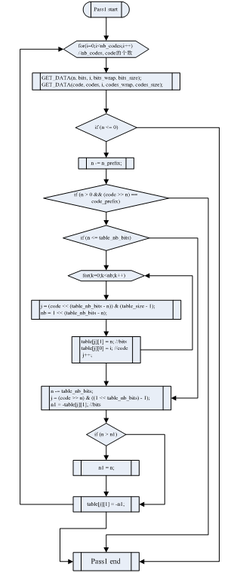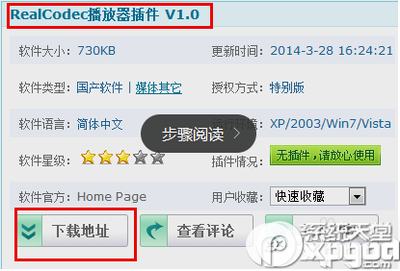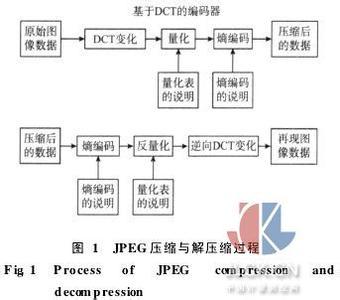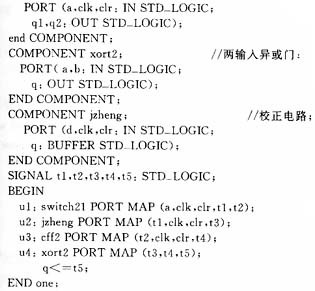* huffman - Encode/Decode files using Huffman encoding.
* Copyright (C) 2003 Douglas Ryan Richardson; Gauss Interprise, Inc
*
* This library is free software; you can redistribute it and/or
* modify it under the terms of the GNU Lesser General Public
* License as published by the Free Software Foundation; either
* version 2.1 of the License, or (at your option) any later version.
*
* This library is distributed in the hope that it will be useful,
* but WITHOUT ANY WARRANTY; without even the implied warranty of
* MERCHANTABILITY or FITNESS FOR A PARTICULAR PURPOSE. See the GNU
* Lesser General Public License for more details.
*
* You should have received a copy of the GNU Lesser General Public
* License along with this library; if not, write to the Free Software
* Foundation, Inc., 59 Temple Place, Suite 330, Boston, MA 02111-1307 USA
*/
/*
* 针对可打印字符的huffman编解码.
*/
#include <stdio.h>
#include <stdlib.h>
#include <string.h>
#include <assert.h>
#include "huffman.h"
#ifdef WIN32
#include <winsock2.h>
#include <winsock.h>
#include <malloc.h>
#define alloca _alloca
#else
#include <netinet/in.h>
#include <sys/socket.h>
#include <sys/types.h>
#endif
// ---------------------------------------------------------------------------------------
/* 描述huffman树的节点 */
typedef struct huffman_node_tag
{
unsigned char isLeaf; // 当前节点是否为叶子节点
unsigned long count; // 权(字符出现的次数)
struct huffman_node_tag *parent; // 当前节点的父亲
union {
/*
* 如果改节点为叶子节点, 则有unsigned char symbol字段,
* 如果该节点不是叶子节点, 则具有左孩子右孩子字段.
*/
struct {
struct huffman_node_tag *zero; // 左孩子
struct huffman_node_tag *one; // 右孩子
};
unsigned char symbol; // 存储的字符.
};
} huffman_node;
/* 编码 */
typedef struct huffman_code_tag
{
/*
* numbits 这个字段是用来记录从leaf--->root一共走了多少步.
* 也就是叶子节点所含字符的编码长度
* bits 是用来存储编码的, 但是它是以Byte为单位的, 而编码是
* 以bit为单位的, 所以需要根据 numbits 去从 bits 里提取出前
* numbits 个bit。 这才是真正的编码.
*
* 比如
* numbits=4
* bits = 0110 1011
* 那么我们应该提取bits的低4位 1011
*
* 注意 numbits 和 bits是有关系的, bits一定不可能超过 numbits/8
*/
/* The length of this code in bits. */
unsigned long numbits;/* 记录从叶子走到root需要多少步, 也就是说需要多少位来对指定的字符进行编码 */
/* The bits that make up this code. The first
bit is at position 0 in bits[0]. The second
bit is at position 1 in bits[0]. The eighth
bit is at position 7 in bits[0]. The ninth
bit is at position 0 in bits[1]. */
unsigned char *bits; /* 用来存储编码String */
} huffman_code;
int
main(int argc, char** argv)
{
/*
char memory = 0;
char compress = 1;
int opt;
const char *file_in = NULL;
const char *file_out = NULL;
*/
//FILE *in = stdin;
//FILE *out = stdout;
FILE *in = NULL;
FILE *out = NULL;
FILE *out2 = NULL;
in = fopen("test.txt", "r+");
out = fopen("test1.txt", "w+");
//out2 = fopen("test2.txt", "w+");
int result = 0;
result = huffman_encode_file(in, out);
//result = huffman_decode_file(out, out2);
printf("result : %d/n", result);
system("pause");
return 1;
}
// ---------------------------------------------------------------------------------------
/**
* bit-->byte转换, 不足8位则补齐8位.
*/
static unsigned long
numbytes_from_numbits(unsigned long numbits)
{
return numbits / 8 + (numbits % 8 ? 1 : 0);
}
/*
* get_bit returns the ith bit in the bits array
* in the 0th position of the return value.
* 取出第i位(从低位往高位排)
*/
static unsigned char
get_bit(unsigned char *bits, unsigned long i)
{
return ( bits[i/8] >> (i%8) ) & 1;
}
/**
* 反转数组的前((numbits/8)+1)个字符
*
*/
static void
reverse_bits(unsigned char* bits, unsigned long numbits)
{
unsigned long numbytes = numbytes_from_numbits(numbits); // 所占字节数.
unsigned char *tmp = (unsigned char*)calloc(numbytes, sizeof(unsigned char)); // 分配内存
unsigned long curbit; // index -- 当前位
long curbyte = 0; // 当前是byte的index
memset(tmp, 0, numbytes); // 将tmp指向的buffer清零
/*
*
*/
for(curbit=0; curbit<numbits; ++curbit) {
unsigned int bitpos = curbit % 8; // 当前byte里的index
if(curbit>0 && curbit%8==0) { //
++curbyte;
}
/*
* 按位 OR
*
*/
tmp[curbyte] |= ( get_bit(bits, numbits-curbit-1) << bitpos );
}
memcpy(bits, tmp, numbytes);
}
/*
* new_code builds a huffman_code from a leaf in
* a Huffman tree.
* 对指定的叶子进行编码.
*/
static huffman_code*
new_code(const huffman_node* leaf)
{
/* Build the huffman code by walking up to
* the root node and then reversing the bits,
* since the Huffman code is calculated by
* walking down the tree. */
unsigned long numbits = 0;
unsigned char *bits = NULL;
huffman_code *p;
while(leaf!=NULL && leaf->parent!=NULL) {
huffman_node *parent = leaf->parent; // 当前活动节点的双亲
unsigned long cur_byte = numbits / 8; // 当前byte
unsigned char cur_bit = (unsigned char)(numbits % 8); // 当前byte里的当前bit
/* If we need another byte to hold the code,
then allocate it. */
if(cur_bit == 0) { // 满了一个byte就需要重新分配内存
size_t newSize = cur_byte + 1;
bits = (char*)realloc(bits, newSize);
bits[newSize - 1] = 0; /* Initialize the new byte. */
}
/*
* ************************************************************************
* 需要注意的是右孩子的处理, 因为左孩子已经是0, 初始分配bits的时候就已经把每位都设置为0了.
* ************************************************************************
*/
/* If a one must be added then or it in. If a zero
* must be added then do nothing, since the byte
* was initialized to zero. */
if(leaf == parent->one) {
/*
* 右孩子的话就需要把当前位置为1
*/
bits[cur_byte] |= (1<<cur_bit);
}
++numbits;
leaf = parent;
}
if( bits != 0) {
/*
* 如果编码里头含有1, 则需要进行反转, 如果全为0, 反转后和反转前是一样的, 就没必要反转了
*/
reverse_bits(bits, numbits);
}
p = (huffman_code*)malloc(sizeof(huffman_code));
p->numbits = numbits; /* 记录从叶子走到root需要多少步, 也就是说需要多少位来对指定的字符进行编码 */
p->bits = bits; /* 用来存储编码的区间 */
return p;
}
/**
* 创建一个孤立的"叶子"节点, 该节点为一个单独的树
* symbol : 该叶子节点的权,即字符
*/
static huffman_node*
new_leaf_node(unsigned char symbol)
{
huffman_node *p = (huffman_node*)malloc( sizeof(huffman_node) );
p->isLeaf = 1;
p->symbol = symbol;
p->count = 0;
p->parent = 0;
return p;
}
/**
* 创建节点(该节点不是叶子节点)
*
* count : 字符出现的次数
* zero : 左孩子
* one : 右兄弟
*
* return : 返回一个节点对象
*/
static huffman_node*
new_nonleaf_node(unsigned long count, huffman_node *zero, huffman_node *one)
{
huffman_node *p = (huffman_node*)malloc( sizeof(huffman_node) );
p->isLeaf = 0;
p->count = count;
p->zero = zero;
p->one = one;
p->parent = 0;
return p;
}
/**
* 释放树占用的内存空间
*/
static void
free_huffman_tree(huffman_node *subtree)
{
if(subtree == NULL)
return;
if( !(subtree->isLeaf) ) {
/*
* 先序遍历进行递归调用
*/
free_huffman_tree( subtree->zero );
free_huffman_tree( subtree->one );
}
free( subtree );
}
/**
* free code
*/
static void
free_code(huffman_code* p)
{
free(p->bits);
free(p);
}
// ----------------------------------------------------------------------------------------
#define MAX_SYMBOLS 256
typedef huffman_node* SymbolFrequencies[MAX_SYMBOLS]; /* */
typedef huffman_code* SymbolEncoder[MAX_SYMBOLS]; /* */
/* */
static void
free_encoder(SymbolEncoder *pSE)
{
unsigned long i;
for(i = 0; i < MAX_SYMBOLS; ++i) {
huffman_code *p = (*pSE)[i];
if( p ) free_code(p);
}
}
/* */
static void
init_frequencies(SymbolFrequencies *pSF)
{
memset(*pSF, 0, sizeof(SymbolFrequencies) ); /* 清零 */
}
// ----------------------------------------------------------------------------------------
typedef struct buf_cache_tag
{
/*
* 该结构主要描述了两个部分, 一个是cache, 一个是bufout.
* cache是一个临时存储数据的buffer, cache会将数据写往bufout区间,
* bufout类似一个仓库, 会一直存储cache写入的数据.
* cache可以多次网bufout内写数据, bufout会一直保存这些数据.
* bufout是一个动态的buffer, cache每一次往bufout内写数据的时候bufout都需要realloc一次.
*/
unsigned char *cache; // 指向真正存储数据的buffer
unsigned int cache_len; // buffer的长度, 初始的时候就可以设置 cache的大小的
unsigned int cache_cur; // 数据结尾处(或者说是光标位置)
unsigned char **pbufout; /*
* cache要写数据就往这个空间内写(类似一个动态仓库, 一定是动态的)
* (*pbufout)就是真实的存储区
*/
unsigned int *pbufoutlen; // 仓库的大小
} buf_cache;
/* 初始化一个buf_cache */
static int init_cache(buf_cache *pc,
unsigned int cache_size,
unsigned char **pbufout,
unsigned int *pbufoutlen)
{
assert(pc && pbufout && pbufoutlen);
if(!pbufout || !pbufoutlen) return 1;
pc->cache = (unsigned char*)malloc(cache_size); // 分配存储空间
pc->cache_len = cache_size; //
pc->cache_cur = 0; // 光标从0开始
pc->pbufout = pbufout; //
*pbufout = NULL; //
pc->pbufoutlen = pbufoutlen;
*pbufoutlen = 0; //
return (pc->cache==NULL ? 0 : 1);
}
/* 释放buf_cache */
static void free_cache(buf_cache* pc)
{
assert( pc );
if( pc->cache != NULL)
{
/*
* 我觉得这里没有必要free( pc->cache );, 直接执行pc->cache = NULL;就可以保证
* 逻辑上清cache了, 至于真实的存储区内是否仍然有数据并没有意义.
*/
free( pc->cache );
pc->cache = NULL;
}
}
/*
* 将cache内的数据写到pbufout中去, 并清洗cache
* 成功则返回0, 失败返回1.
*/
static int flush_cache(buf_cache* pc)
{
assert( pc );
if(pc->cache_cur > 0) // 确定cache_cur有平移, 这样才能确定cache内有数据. 才可以flush
{
/* 当前要写的数据长度为pc->cache_cur, 原来的bufout里头本身还有*(pc->pbufoutlen)长度的数据 */
unsigned int newlen = pc->cache_cur + *(pc->pbufoutlen);
/* 需要重新为*(pc->pbufout)分配空间, tmp为这个新buffer的首地址 */
unsigned char* tmp = realloc(*(pc->pbufout), newlen);
if( !tmp ) return 1;
/* 追加到pbufout结尾处, 而不是覆盖 */
memcpy(tmp + *(pc->pbufoutlen), pc->cache, pc->cache_cur);
*pc->pbufout = tmp; // pbufout指针重定位到新的扩大了的内存区.
*pc->pbufoutlen = newlen; // 重新计算pbufoutlen
pc->cache_cur = 0; // cache逻辑上清零
}
return 0;
}
/* 写cache */
static int write_cache(buf_cache* pc,
const void *to_write,
unsigned int to_write_len)
{
unsigned char* tmp;
assert(pc && to_write);
assert(pc->cache_len >= pc->cache_cur);
/* If trying to write more than the cache will hold
* flush the cache and allocate enough space immediately,
* that is, don't use the cache. */
if(to_write_len > pc->cache_len - pc->cache_cur)
{
/*
* to_write_len : 需要往cache内写的数据长度
* pc->cache_len-pc->cache_cur : cache内剩余空间
* 如果cache存储能力不够则先清洗cache, 再将数据直接写到
* pbufout中去, 不使用cache.
*/
unsigned int newlen;
flush_cache( pc );
newlen = *pc->pbufoutlen + to_write_len;
tmp = realloc(*pc->pbufout, newlen);
if( !tmp ) return 1;
memcpy(tmp + *pc->pbufoutlen, to_write, to_write_len);
*pc->pbufout = tmp;
*pc->pbufoutlen = newlen;
}
else
{
/*
* Write the data to the cache
* 如果cache存储能力足够,则往cache内追加数据且将当前光标移动到新的数据尾部.
*/
memcpy(pc->cache+pc->cache_cur, to_write, to_write_len);
pc->cache_cur += to_write_len;
}
return 0;
}
// -------------------------------------------------------------------------------------
/*
* 计算FILE对象内的各个字符出现的频率
* 扫描FILE对象,
*/
static unsigned int
get_symbol_frequencies(SymbolFrequencies *pSF, FILE *in)
{
int c;
unsigned int total_count = 0; // FILE对象内的字符总数
init_frequencies( pSF ); /* Set all frequencies to 0. */
/* Count the frequency of each symbol in the input file. */
while( (c=fgetc(in)) != EOF )
{
unsigned char uc = c;
if( !(*pSF)[uc] ) // 如果这个字符没有出现过则为这个字符建立一个叶子
{
/*
* 这里设计的相当有意思,
* fgetc会获得当前光标所在的字符, 这个字符必然是一个char, 也就是一个
* unsinged int型数.
* 我们前面有定义
* #define MAX_SYMBOLS 256
* typedef huffman_node* SymbolFrequencies[MAX_SYMBOLS];
* typedef huffman_code* SymbolEncoder[MAX_SYMBOLS];
* 这里我们采用SymbolFrequencies[uc]就存储c这个字符.
* 也就是说
* SymbolFrequencies[0]==0x00
* SymbolFrequencies[1]==0x01
* ......
* SymbolFrequencies[65]==A ( A==65 :) )
* SymbolFrequencies[66]==B ( B==66 :) )
* ......
* 起初在typedf SymbolFrequencies的时候, 我着实没看懂, 实在太巧妙了.
*/
(*pSF)[uc] = new_leaf_node( uc );
}
/*
* 这个自加也非常巧妙, 遇到uc字符则将第uc个huffman_node的count自加
* 实际就是一个字符一个字符读下去,,
* 读到了A就 ++(pSF['A'].count) == ++(pSF[65].count)
* 读到了B就 ++(pSF['B'].count) == ++(pSF[66].count)
* 真TNND的牛X!
*/
++( (*pSF)[uc]->count );
++total_count;
}
return total_count;
}
/* 计算buffer内各个字符的频率,和get_symbol_frequencies函数同理 */
static unsigned int
get_symbol_frequencies_from_memory(SymbolFrequencies *pSF,
const unsigned char *bufin,
unsigned int bufinlen)
{
unsigned int i;
unsigned int total_count = 0;
/* Set all frequencies to 0. */
init_frequencies(pSF);
/* Count the frequency of each symbol in the input file. */
for(i = 0; i < bufinlen; ++i)
{
unsigned char uc = bufin[i];
if( !(*pSF)[uc] )
{
(*pSF)[uc] = new_leaf_node(uc);
}
++(*pSF)[uc]->count;
++total_count;
}
return total_count;
}
/*
* When used by qsort, SFComp sorts the array so that
* the symbol with the lowest frequency is first. Any
* NULL entries will be sorted to the end of the list.
*
* 两个huffman_node进行对比, 以count作为比较依据.
* 即对比两个不同 symbol 出现的频率
* 非叶子节点通通排在后面
*/
static int
SFComp(const void *p1, const void *p2)
{
const huffman_node *hn1 = *(const huffman_node**)p1;
const huffman_node *hn2 = *(const huffman_node**)p2;
/* Sort all NULLs to the end. */
if(hn1 == NULL && hn2 == NULL) return 0;
if(hn1 == NULL) return 1;
if(hn2 == NULL) return -1;
if(hn1->count > hn2->count) return 1;
else if(hn1->count < hn2->count) return -1;
return 0;
}
/*
* build_symbol_encoder builds a SymbolEncoder by walking
* down to the leaves of the Huffman tree and then,
* for each leaf, determines its code.
*
* 递归方式为每个叶子节点编码
*/
static void
build_symbol_encoder(huffman_node *subtree, SymbolEncoder *pSE)
{
if(subtree == NULL) return;
if( subtree->isLeaf )
{
(*pSE)[subtree->symbol] = new_code( subtree );
}
else
{
build_symbol_encoder(subtree->zero, pSE);
build_symbol_encoder(subtree->one, pSE);
}
}
/*
* calculate_huffman_codes turns pSF into an array
* with a single entry that is the root of the
* huffman tree. The return value is a SymbolEncoder,
* which is an array of huffman codes index by symbol value.
*
* 为每个node编码. 这个函数比较重要, 精华就是在这个函数里头的for循环. 哈哈
* 整个tree的建立全都依赖这个函数
*/
static SymbolEncoder*
calculate_huffman_codes(SymbolFrequencies * pSF)
{
unsigned int i = 0;
unsigned int n = 0;
huffman_node *m1 = NULL, *m2 = NULL;
SymbolEncoder *pSE = NULL;
/*
* Sort the symbol frequency array by ascending frequency.
* 快速排序例程进行排序
* 以symbol频率为关键字做升序排列
* 有symbol的节点都会按升序排列, 没有symbol的节点会统一排在后面,
* 通过一个for就能计算出symbol的个数了.
*/
qsort((*pSF), MAX_SYMBOLS, sizeof((*pSF)[0]), SFComp);
/*
* Get the number of symbols.
* 计算huffman树中的字符数, 这个实现可读性不够好
*/
for(n = 0; (n<MAX_SYMBOLS) && (*pSF)[n]; ++n)
;
/*
* Construct a Huffman tree. This code is based
* on the algorithm given in Managing Gigabytes
* by Ian Witten et al, 2nd edition, page 34.
* Note that this implementation uses a simple
* count instead of probability.
*/
for(i = 0; i < (n-1); ++i)
{
/* Set m1 and m2 to the two subsets of least probability. */
m1 = (*pSF)[0];
m2 = (*pSF)[1];
/* Replace m1 and m2 with a set {m1, m2} whose probability
* is the sum of that of m1 and m2.
* 这个算法有优化的余地的, 因为n在一直减小.
* 将最小的两个元素合并后得到一个一个节点为m12, 此时m1,m2已经建立起来了关系.
* 这个m12的地址又被pSF[0]存储, 循环直至整个Tree建立成功.
* 指针在这里运用的实在太巧妙了.
* 这一行代码就是建树, 靠,NBA!
*/
(*pSF)[0] = m1->parent = m2->parent = new_nonleaf_node(m1->count+m2->count, m1, m2);
(*pSF)[1] = NULL;
/*
* Put newSet into the correct count position in pSF.
* 这里应该可以再进行优化, 是否有必要再进行排序, 或者被排序的数组过长了.
* 实际上每循环一次n都减少了一次
*/
qsort((*pSF), n, sizeof((*pSF)[0]), SFComp);
}/* for完毕的时候就求出了root, pSF[0]就是root, 后面的元素都是NULL
* 而树通过for循环里头的
* (*pSF)[0] = m1->parent = m2->parent = new_nonleaf_node(m1->count+m2->count, m1, m2);
* 已经建立完成了*/
/* Build the SymbolEncoder array from the tree. */
pSE = (SymbolEncoder*)malloc(sizeof(SymbolEncoder));
memset(pSE, 0, sizeof(SymbolEncoder));
build_symbol_encoder((*pSF)[0], pSE);
return pSE;
}
/*
* Write the huffman code table. The format is:
* 4 byte code count in network byte order.
* 4 byte number of bytes encoded
* (if you decode the data, you should get this number of bytes)
* code1
* ...
* codeN, where N is the count read at the begginning of the file.
* Each codeI has the following format:
* 1 byte symbol, 1 byte code bit length, code bytes.
* Each entry has numbytes_from_numbits code bytes.
* The last byte of each code may have extra bits, if the number of
* bits in the code is not a multiple of 8.
*
* 编码后的格式 :
* 0-3个byte是FILE内出现的不同字符个数(几不同的字符个数)
* 4-7个byte是FILE内出现的全部字符个数(所有的字符)
* 8-X是真正的编码后值
*
*/
static int
write_code_table(FILE* out, SymbolEncoder *se, unsigned int symbol_count)
{
unsigned long i, count = 0;
/*
* Determine the number of entries in se
* 计算 SymbolEncoder 内具有编码值的元素个数.
* 即有几种字符
*/
for(i = 0; i < MAX_SYMBOLS; ++i)
if( (*se)[i] )
++count;
/*
* Write the number of entries in network byte order.
* 将字符种数写入到文件头部, 即[0, 3]一共4个字节
*/
//i = htonl( count );
i = count;
if(fwrite(&i, sizeof(i), 1, out) != 1) return 1;
/*
* Write the number of bytes that will be encoded.
* 将字符个数追加到[4,7]一共4个字节
*/
//symbol_count = htonl(symbol_count);
symbol_count = symbol_count;
if(fwrite(&symbol_count, sizeof(symbol_count), 1, out) != 1) return 1;
/*
* Write the entries.
*/
for(i = 0; i < MAX_SYMBOLS; ++i)
{
huffman_code *p = (*se)[i];
if( p != NULL )
{ /*
* 每个单元分为三个部分 :
* symbol -- 字符
* numbits -- 叶子走到root需要的步数
* bits -- 叶子走到root的方式(即最终的编码, 比如说0101)
*/
unsigned int numbytes;
/* Write the 1 byte symbol. */
fputc((unsigned char)i, out);
/* Write the 1 byte code bit length. */
fputc(p->numbits, out);
/* Write the code bytes. 她这个注释就没有说是几byte, 值得思考一下 */
numbytes = numbytes_from_numbits( p->numbits );
/* 将叶子走到root的方式写进去, 这个方式会被整理为byte格式, 不够就补0 */
if(fwrite(p->bits, 1, numbytes, out) != numbytes) return 1;
}
}
return 0;
}
/*
* Allocates memory and sets *pbufout to point to it. The memory
* contains the code table.
*
* 以指定的格式将编码后的数据写入到cache中去, 实际是写到pbufout中去了.
*
*/
static int
write_code_table_to_memory(buf_cache *pc,
SymbolEncoder *se,
unsigned int symbol_count)
{
unsigned long i, count = 0;
/* Determine the number of entries in se. */
for(i = 0; i < MAX_SYMBOLS; ++i)
{
if((*se)[i])
{
++count; // 计算不同字符的个数
}
}
/* Write the number of entries in network byte order. */
//i = htonl(count);
i = count;
if( write_cache(pc, &i, sizeof(i)) ) // 前四个字节是memory内所有字符数
return 1;
/* Write the number of bytes that will be encoded. */

//symbol_count = htonl(symbol_count);
symbol_count = symbol_count;
if( write_cache(pc, &symbol_count, sizeof(symbol_count)) ) // 4-8字节是不同字符个数
return 1;
/* Write the entries. */
for(i = 0; i < MAX_SYMBOLS; ++i)
{
huffman_code *p = (*se)[i];
if( p )
{
/*
* 对于每次循环来说, 如果p不为NULL, 则将该字符对应的编码写入到cache内.
* 存储格式为三个字节作为一个单位.
* byte0 --- 字符本身
* byte1 --- 该字符编码后的码值长度(即2进制的位数)
* byte2 --- 该字符对应的码值
*/
unsigned int numbytes;
/*
* The value of i is < MAX_SYMBOLS (256), so it can
* be stored in an unsigned char.
* 将i转换为char型, 可以对应到字符集
*/
unsigned char uc = (unsigned char)i;
/*
* Write the 1 byte symbol.
* 将字符写到cache内
*/
if(write_cache(pc, &uc, sizeof(uc))) return 1;
/*
* Write the 1 byte code bit length.
* 将叶子节点到root所需要经过的步数写到cache内, 也就是编码的长度
* 这个数据是为了解码使用的.
*/
uc = (unsigned char)p->numbits;
if(write_cache(pc, &uc, sizeof(uc))) return 1;
/*
* Write the code bytes.
* 将编码值对齐并写如到cache内
* 事先必须知道编码由几位组成, 如果编码为9位, 那么就需要2个byte来存储这个码值
* 如果编码为4位, 那么就需要1个byte来存储了,
*/
numbytes = numbytes_from_numbits(p->numbits);
if(write_cache(pc, p->bits, numbytes)) return 1;
}
}
return 0;
}
/*
* read_code_table builds a Huffman tree from the code
* in the in file. This function returns NULL on error.
* The returned value should be freed with free_huffman_tree.
*
*
*/
static huffman_node*
read_code_table(FILE* in, unsigned int *pDataBytes)
{
huffman_node *root = new_nonleaf_node(0, NULL, NULL);
unsigned int count;
/*
* Read the number of entries.
* (it is stored in network byte order).
* 获得字符种数, 前2个byte就是出现的字符种数
*/
if( fread(&count, sizeof(count), 1, in) != 1 )
{
free_huffman_tree( root );
return NULL;
}
//count = ntohl(count);
count = count;
/*
* Read the number of data bytes this encoding represents.
* 一个有多少个字符
*/
if( fread(pDataBytes, sizeof(*pDataBytes), 1, in) != 1 )
{
free_huffman_tree(root);
return NULL;
}
//*pDataBytes = ntohl(*pDataBytes);
*pDataBytes = *pDataBytes;
/* Read the entries. */
while(count-- > 0)
{
int c;
unsigned int curbit;
unsigned char symbol;
unsigned char numbits;
unsigned char numbytes;
unsigned char *bytes;
huffman_node *p = root;
if( (c=fgetc(in)) == EOF )
{
free_huffman_tree( root );
return NULL;
}
symbol = (unsigned char)c;
if( (c=fgetc(in)) == EOF )
{
free_huffman_tree( root );
return NULL;
}
numbits = (unsigned char)c;
numbytes = (unsigned char)numbytes_from_numbits( numbits );
bytes = (unsigned char*)malloc( numbytes );
if( fread(bytes, 1, numbytes, in) != numbytes )
{
free(bytes);
free_huffman_tree(root);
return NULL;
}
/*
* Add the entry to the Huffman tree. The value
* of the current bit is used switch between
* zero and one child nodes in the tree. New nodes
* are added as needed in the tree.
*/
for(curbit = 0; curbit < numbits; ++curbit)
{
if(get_bit(bytes, curbit))
{
if(p->one == NULL)
{
p->one =
curbit == (unsigned char)(numbits-1) ?
new_leaf_node(symbol) : new_nonleaf_node(0, NULL, NULL);
p->one->parent = p;
}
p = p->one;
}
else
{
if(p->zero == NULL)
{
p->zero =
curbit == (unsigned char)(numbits - 1) ?
new_leaf_node(symbol) : new_nonleaf_node(0, NULL, NULL);
p->zero->parent = p;
}
p = p->zero;
}
}
free(bytes);
}
return root;
}
/*
* 将数据从buf读到bufout中, 成功则返回0, 其他则返回1.
* pindex -- 拷贝的起点
*/
static int
memread(const unsigned char* buf,
unsigned int buflen,
unsigned int *pindex,
void* bufout,
unsigned int readlen)
{
assert(buf && pindex && bufout);
assert(buflen >= *pindex);
// 错误
if(buflen < *pindex) return 1;
if(readlen + *pindex >= buflen) return 1;
memcpy(bufout, buf + *pindex, readlen);
*pindex += readlen;
return 0;
}
/*
* 从编码后的buf内读数据.
*/
static huffman_node*
read_code_table_from_memory(const unsigned char* bufin,
unsigned int bufinlen,
unsigned int *pindex,
unsigned int *pDataBytes)
{
huffman_node *root = new_nonleaf_node(0, NULL, NULL);
unsigned int count;
/*
* Read the number of entries.
* (it is stored in network byte order).
* 读取
*/
if( memread(bufin, bufinlen, pindex, &count, sizeof(count)) )
{
free_huffman_tree(root);
return NULL;
}
//count = ntohl(count);
count = count;
/* Read the number of data bytes this encoding represents. */
if(memread(bufin, bufinlen, pindex, pDataBytes, sizeof(*pDataBytes)))
{
free_huffman_tree(root);
return NULL;
}
//*pDataBytes = ntohl(*pDataBytes);
*pDataBytes = *pDataBytes;
/* Read the entries. */
while( (count--) > 0 )
{
unsigned int curbit;
unsigned char symbol;
unsigned char numbits;
unsigned char numbytes;
unsigned char *bytes;
huffman_node *p = root;
if(memread(bufin, bufinlen, pindex, &symbol, sizeof(symbol)))
{
free_huffman_tree(root);
return NULL;
}
if(memread(bufin, bufinlen, pindex, &numbits, sizeof(numbits)))
{
free_huffman_tree(root);
return NULL;
}
numbytes = (unsigned char)numbytes_from_numbits(numbits);
bytes = (unsigned char*)malloc(numbytes);
if(memread(bufin, bufinlen, pindex, bytes, numbytes))
{
free(bytes);
free_huffman_tree(root);
return NULL;
}
/*
* Add the entry to the Huffman tree. The value
* of the current bit is used switch between
* zero and one child nodes in the tree. New nodes
* are added as needed in the tree.
*/
for(curbit = 0; curbit < numbits; ++curbit)
{
if(get_bit(bytes, curbit))
{
if(p->one == NULL)
{
p->one = ( curbit==(unsigned char)(numbits - 1) ) ?
new_leaf_node(symbol) : new_nonleaf_node(0, NULL, NULL);
p->one->parent = p;
}
p = p->one;
}
else
{
if(p->zero == NULL)
{
p->zero = curbit == (unsigned char)(numbits - 1)
? new_leaf_node(symbol)
: new_nonleaf_node(0, NULL, NULL);
p->zero->parent = p;
}
p = p->zero;
}
}
free(bytes);
}
return root;
}
/*
* 依次将各个字符的编码写入到out中, 这次是直接写, 不对编码进行整齐工作
* 也就是不将编码强制为byte类型了, 而是直接写入到out中.
*/
static int
do_file_encode(FILE* in, FILE* out, SymbolEncoder *se)
{
unsigned char curbyte = 0;
unsigned char curbit = 0;
int c;
while( (c = fgetc(in)) != EOF)
{
//printf("c=%c /n", c);
unsigned char uc = (unsigned char)c;
huffman_code *code = (*se)[uc];
unsigned long i;
for(i = 0; i < code->numbits; ++i)
{
//printf("i=%d /n", i);
/* Add the current bit to curbyte. */
curbyte |= get_bit(code->bits, i) << curbit;
/* If this byte is filled up then write it
* out and reset the curbit and curbyte. */
if(++curbit == 8)
{
/*
* 依次将各个字符的编码写入到out中, 这次是直接写, 不对编码进行整齐工作
* 也就是不将编码强制为byte类型了, 而是直接写入到out中.
*/
fputc(curbyte, out);
printf("curbyte=%d/n", curbyte);
// printf("curbyte=%d /n", curbyte);
curbyte = 0;
curbit = 0;
}
}
printf("/n");
}
/*
* If there is data in curbyte that has not been
* output yet, which means that the last encoded
* character did not fall on a byte boundary,
* then output it.
*/
if(curbit > 0)
fputc(curbyte, out);
return 0;
}
/*
* 对memory进行编码.
*
* pc -- cache
* bufin -- 待编码的buffer
* bufinlen -- buffer长, 即字符个数
* se --
*/
static int
do_memory_encode(buf_cache *pc,
const unsigned char *bufin,
unsigned int bufinlen,
SymbolEncoder *se)
{
unsigned char curbyte = 0; //
unsigned char curbit = 0;
unsigned int i;
/* 对 bufin 内的字符依次循环 */
for(i = 0; i < bufinlen; ++i)
{
unsigned char uc = bufin[i];
huffman_code *code = (*se)[uc]; // 取出第i个字符的编码
unsigned long i;
/* 对第i个字符编码长度进行循环 */
for(i = 0; i < code->numbits; ++i)
{
/*
* Add the current bit to curbyte.
* 依次取出
*/
curbyte |= ( get_bit(code->bits, i) << curbit );
/*
* If this byte is filled up then write it
* out and reset the curbit and curbyte
*/
if(++curbit == 8)
{
/*
* 满了一个字节则写cache
*
*/
if(write_cache(pc, &curbyte, sizeof(curbyte))) return 1;
curbyte = 0;
curbit = 0;
}
}
}
/*
* If there is data in curbyte that has not been
* output yet, which means that the last encoded
* character did not fall on a byte boundary,
* then output it.
*/
return curbit > 0 ? write_cache(pc, &curbyte, sizeof(curbyte)) : 0;
}
/*
* huffman_encode_file huffman encodes in to out.
* 对FILE对象进行编码, 将*in编码后写入*out.
*/
int
huffman_encode_file(FILE *in, FILE *out)
{
SymbolFrequencies sf;
SymbolEncoder *se;
huffman_node *root = NULL;
int rc;
unsigned int symbol_count;
/*
* Get the frequency of each symbol in the input file.
* 将FILE中的数据写入到SymbolFrequencies中, 计算出了各个字符出现频率,
* 也计算出了FILE对象内的总字符数.
*/
symbol_count = get_symbol_frequencies(&sf, in);
/*
* Build an optimal table from the symbolCount.
* 建树完毕, root就是sf[0], sf[1]=sf[2]=...sf[MAX_SYMBOLS]=NULL了
*/
se = calculate_huffman_codes( &sf );
root = sf[0];
/*
* Scan the file again and, using the table
* previously built, encode it into the output file.
*/
rewind( in ); // 将文件指针重新指向一个流的开头
/*
* 将编码写如文件流
*/
rc = write_code_table(out, se, symbol_count);
if(rc == 0)
rc = do_file_encode(in, out, se);
/* Free the Huffman tree. */
free_huffman_tree( root );
free_encoder(se);
return rc;
}
/**
* 对FILE进行解码
*/
int
huffman_decode_file(FILE *in, FILE *out)
{
huffman_node *root;
huffman_node *p;
int c;
unsigned int data_count;
/* Read the Huffman code table. */
root = read_code_table(in, &data_count);
if( !root ) return 1;
/* Decode the file. */
p = root;
while(data_count>0 && (c=fgetc(in))!=EOF)
{
unsigned char byte = (unsigned char)c;
unsigned char mask = 1;
while(data_count > 0 && mask)
{
p = ( (byte&mask)? p->one : p->zero );
mask <<= 1;
if( p->isLeaf )
{
fputc(p->symbol, out);
p = root;
--data_count;
}
}
}
free_huffman_tree( root );
return 0;
}
// --------------------------------------------------------------------------------------
#define CACHE_SIZE 1024 /*
* 对memory编码需要考虑到数据源的速度和bufout的接收速度不匹配, cache
* cache是为了连接不同速度的设备而设计的
*/
/**
* 对buffer进行编码
*
*/
int huffman_encode_memory(const unsigned char *bufin,
unsigned int bufinlen,
unsigned char **pbufout,
unsigned int *pbufoutlen)
{
SymbolFrequencies sf;
SymbolEncoder *se;
huffman_node *root = NULL;
int rc;
unsigned int symbol_count; // memory中的字符个数
buf_cache cache; //
/* Ensure the arguments are valid. 检测参数合法性 */
if(!pbufout || !pbufoutlen) return 1;
if( init_cache(&cache, CACHE_SIZE, pbufout, pbufoutlen) ) return 1;
/*
* Get the frequency of each symbol in the input memory
* 计算bufin内各个字符出现的频率, 并求得bufin内存储的字符个数.
*/
symbol_count = get_symbol_frequencies_from_memory(&sf, bufin, bufinlen);
/*
* Build an optimal table from the symbolCount.
* 为每个Node编码, 如果这个Node的symbol为NULL, 则不编码了.
*/
se = calculate_huffman_codes( &sf );
root = sf[0]; // root来拉, 哈哈, 逻辑树出来了.
/*
* Scan the memory again and, using the table
* previously built, encode it into the output memory.
* 将se内的数据统统的写入到cache中克.
*/
rc = write_code_table_to_memory(&cache, se, symbol_count);
if(rc == 0)
{
/*
* 为什么write_code_table_to_memory成功之后还要要执行一次do_memory_encode?
*
*/
rc = do_memory_encode(&cache, bufin, bufinlen, se);
}
/* Flush the cache. */
flush_cache( &cache );
/* Free the Huffman tree. */
free_huffman_tree( root );
free_encoder( se );
free_cache( &cache );
return rc;
}
/**
* 对bufin进行解码. 将解码后的数据写入到bufout中.
*/
int huffman_decode_memory(const unsigned char *bufin,
unsigned int bufinlen,
unsigned char **pbufout,
unsigned int *pbufoutlen)
{
huffman_node *root, *p;
unsigned int data_count;
unsigned int i = 0;
unsigned char *buf;
unsigned int bufcur = 0;
/* Ensure the arguments are valid. */
if(!pbufout || !pbufoutlen) return 1;
/* Read the Huffman code table. */
root = read_code_table_from_memory(bufin, bufinlen, &i, &data_count);
if(!root) return 1;
buf = (unsigned char*)malloc(data_count);
/* Decode the memory. */
p = root;
for(; i < bufinlen && data_count > 0; ++i)
{
unsigned char byte = bufin[i];
unsigned char mask = 1;
while(data_count > 0 && mask)
{
p = byte & mask ? p->one : p->zero;
mask <<= 1;
if(p->isLeaf)
{
buf[bufcur++] = p->symbol;
p = root;
--data_count;
}
}
}
free_huffman_tree(root);
*pbufout = buf;
*pbufoutlen = bufcur;
return 0;
}
/*
--------------------------------------------------------------------------------
不妨假设待编码的buffer为 "ABCAADC"
手工分析可得该树的形状 :
当然也可以也可以将这个树沿y方向翻转180度
root
//
/ /
A *
//
/ /
C *
//
/ /
B D
现在我们知道的两个事实是 :
这个buffer内的字符数为 : symbol_count = 7 ( "ABCAADC"一个有7个字符 )
这个buffer内出现的字符种数为 : count = 4 ( 只出现了ABCD四种字符 )
接下来人工分析各个字符 :
symbol | count | bits
--------|-----------|---------------------
A | 3 | 0000 0000
B | 1 | 0000 0110
C | 2 | 0000 0010
D | 1 | 0000 0111
我们设置左边为0, 右边为1. bits为从叶子节点走到root的路径.
分析完毕后, 需要实现整个编码过程. 编码过程暂时跳过.
假设成功编码完毕, 需要把编码后的数据写入到bufout内.
bufout内的
0-3个byte为字符种数 count
4-7个byte为字符个数 symbol_count
然后是遍历SymbolEncoder, 依次对每种字符进行编码(我们这个例子只进行4次编码)
我们对每种字符都会进行编码, 每个字符编码后的输出不妨称为frame
那么这个frame是由三个部分组成的:
(这个我们可以肯定一个char肯定是1byte的)
symbol (1byte) -- 字符
(这个我们可以肯定就算这个树根本没有分支, 永远只有左/右孩子, 那也了不起是是256的深度)
numbits (1byte) -- 叶子走到root需要的步数
bits (1byte) -- 叶子走到root的方式(即最终的编码, 比如说011)
开始我对这个bites到底占了多少个byte很是怀疑, 因为我不知道从叶子走到root
到底耗费了几步. 这里需要好好研究一下, 最好和最差情况. 暂时假设是个变化的byte吧.
但是有一点bites跟numbits是有关系的, 所以只要知道numbits还是可以知道bites占据了
多少byte的, 也知道bits到底是有几位.
byte content
---------------------------------------------
0-3(4) count
4-7(4) symbol_count
A占xa个byte frame_struct
B占xb个byte frame_struct
C占xc个byte frame_struct
D占xd个byte frame_struct
X X
这个X是do_file_encode函数写到bufout中去的数据, 那么这个数据是什么呢?
实际上它是循环的把出现的字符的bits写到bufout中,
根据这个数据,解码的时候就可以依次的找到第0,1,2...个位置出现的是什么字符了
--------------------------------------------------------------------------------
*/
 爱华网
爱华网


